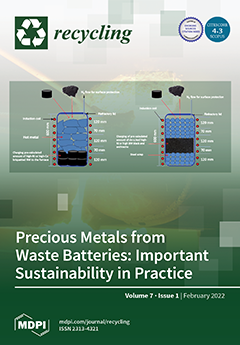In this study, the physicochemical and biological contributions of different macrophytes in horizontal sub-surface flow constructed wetlands (HSSF-CWs) to treat low-strength municipal wastewater operated at high hydraulic loads under a sub-tropical climatic region is investigated. Out of the four identical beds, three were planted with locally available macrophytes (
P. australis,
Sagittaria, and
Iris), whereas one bed was kept as a control. The beds were filled with media and operated in parallel continuously for eight months, with increasing the surface loading rate (SLR) from 0.19 to 2.78 m day
−1. The results indicate that the planted beds performed significantly (
p < 0.01) better to remove TSS (70% to 78%), BOD
5 (66% to 77%), COD (59% to 75%), NO
3-N (56% to 64%), NH
4-N (41% to 69%), TN (36% to 41%), and TP (44% to 61%) as compared to the unplanted bed for the same parameters (48%, 39%, 40%, 33%, 18%, 20%, and 29%, respectively). The presence of macrophytes in HSSF-CWs was found to be highly significant. The average relative growth rate (RGR) was observed in the order of
P. australis (0.0086 day
−1) >
Sagittaria (0.0061 day
−1) >
Iris (0.0059 day
−1). When compared to the performances of the species used,
Sagittaria and
P. australis produced better results than
Iris. The investigations on biomass showed that
Sagittaria yielded higher production, followed by
P. australis and
Iris. The proportions of uptake by the macrophytes were found to be 9.3%, 6.3%, and 3.9% of mass N removal, and 7.6%, 5.1%, and 4.4% of mass
p removal in
Sagittaria,
P. australis, and
Iris, respectively. This study contributes to the effective response to the environment, which validates a major role of macrophytes and their disparate response to pollutant removal processes by different species from municipal wastewater through HSSF-CWs.
Full article





